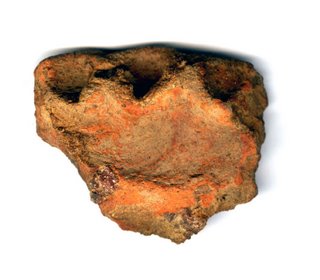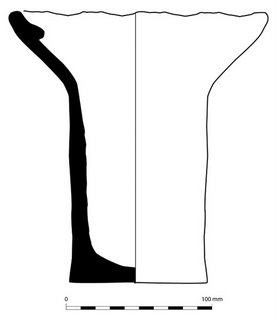
Iron Age pottery has been recovered from the pre-Roman cultivation soils beneath the earliest phase of the Roman amphitheatre in the area between the concentric wall and the arena wall. It is part of the rim of a salt container. This late prehistoric pottery is a type found in the north west of England and known as Cheshire VCP which is an abbreviation for Very Coarse Pottery. It has also been found in North Wales and the northern and central Welsh Marches area and dates from approximately 500 BC to the middle of the first century AD.
Salt production has been a way of life in Cheshire since the Iron Age and these vessels served as crude containers for the final drying and transportation of salt from brine spring sources to settlements in the area. The distribution of salt suggests an extensive exchange network in the second half of the first millennium BC across North Wales, north west England and northern Midlands.
The salt was used for preservation such as salting meat, for making cheese and preserving hides. The pots are handmade, generally orange in colour and fired at a low temperature. They are described as ‘coarse’ because within the clay there are pieces of quartz and rock. Unfortunately we don’t know exactly where the vessels were made but scientific analysis of the clays suggest they were manufactured in the Nantwich – Middlewich area.
The small bases and flaring conical rims make them suitable as evaporation containers for drying out the salt. There are no soot or food deposits found on them as would be expected on cooking pots and jars – a shape suited to reducing evaporation during cooking and usually grey, black or brown in colour.

Although we have several fragments of this type of pottery from excavations in Cheshire and Merseyside, this is a significant find in Chester.


1 Comments:
I think the pre-Roman evidence is just as exciting as the Roman stuff. I particularly like the way these excavations have shown the whole picture of the occupation of this site backwards through time from the present day. And I hope this season won't be the last - there is so much more that this site can tell us about our city.
Post a Comment
<< Home